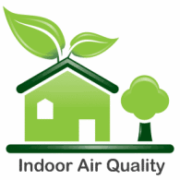Uncovering the Hidden Dangers in Your Home
Uncovering the Hidden Dangers in Your Home: A Guide to Indoor Air Pollution
As we strive to create a safe and healthy living environment, it’s easy to overlook one of the most significant threats to our well-being: indoor air pollution. While we often focus on visible hazards, there are many hidden sources of pollution lurking in our homes. Let’s explore these lesser-known culprits and discover how to protect ourselves and our families.
The Cleaning Closet: A Source of Pollution?
Many of us use cleaning products and personal care items daily without realizing they can release volatile organic compounds (VOCs) into the air. These chemicals can not only affect indoor air quality but also contribute to outdoor pollution. To minimize this risk, opt for products with natural ingredients and use them sparingly.
Cozy Nights by the Fire: A Hidden Risk
Burning candles and using fireplaces can create a cozy atmosphere, but they also release particulate matter and VOCs into the air. Enjoy these comforts in moderation and ensure good ventilation to reduce their impact.
The Furniture You Sit On: Formaldehyde Risks
Some building materials and furniture, especially those made from pressed wood, contain formaldehyde, a known carcinogen. To mitigate this risk, improve ventilation in your home and consider using air purifiers designed to capture formaldehyde.
Radon: The Invisible Threat
Radon is a radioactive gas that can seep into your home through cracks and gaps, posing a significant risk of lung cancer. Use radon test kits to detect its presence and seal entry points to keep your home safe.
The Carpet Conundrum: Allergens and VOCs
Carpets and upholstered furniture can harbor allergens like dust mites and release VOCs. Regularly vacuum with HEPA filters and consider replacing with hardwood or low-VOC alternatives to reduce these risks.
Biological Pollutants: Mold and Pet Dander
Moisture can lead to mold growth, while pets introduce dander into the air. Maintain optimal humidity levels (between 40-60%) and regularly clean pet areas to keep these pollutants under control.
Cooking Up Pollution
Cooking, especially with gas stoves, can release harmful pollutants like particulate matter and VOCs. Use range hoods and ensure good ventilation to minimize these risks.
Taking Action: Steps to a Healthier Home
-
Identify the Sources: Be aware of potential pollution sources in your home.
-
Monitor Air Quality: Use sensors to detect pollutants like VOCs, particulate matter, and radon.
-
Improve Ventilation: Regularly open windows and use fans to enhance airflow.
-
Choose Low-VOC Products: Opt for cleaning and personal care products with minimal VOCs.
-
Maintain Humidity Levels: Keep humidity between 40-60% to prevent mold growth.
By understanding these hidden dangers and taking proactive steps, you can create a safer, healthier living space for you and your loved ones. Start today and breathe easier tomorrow!





